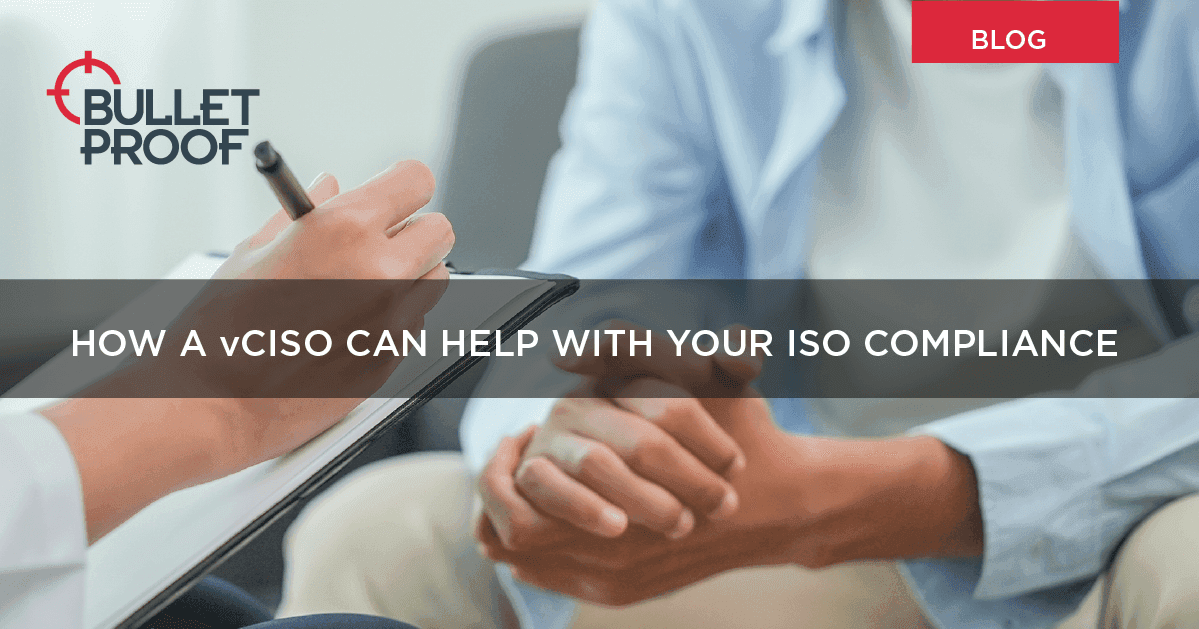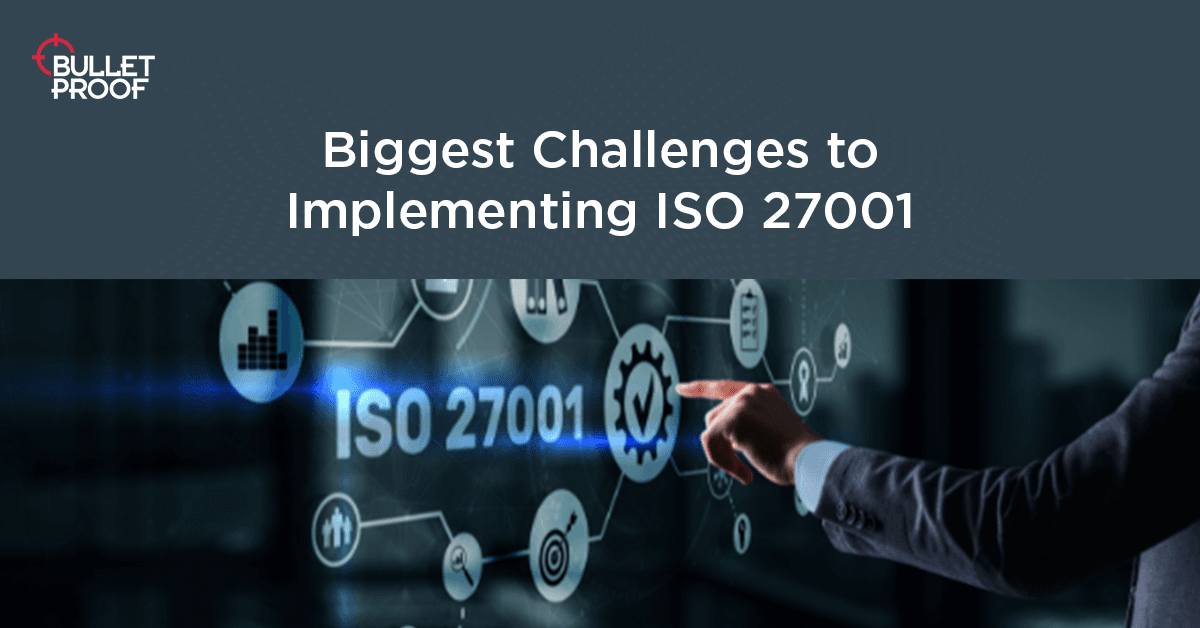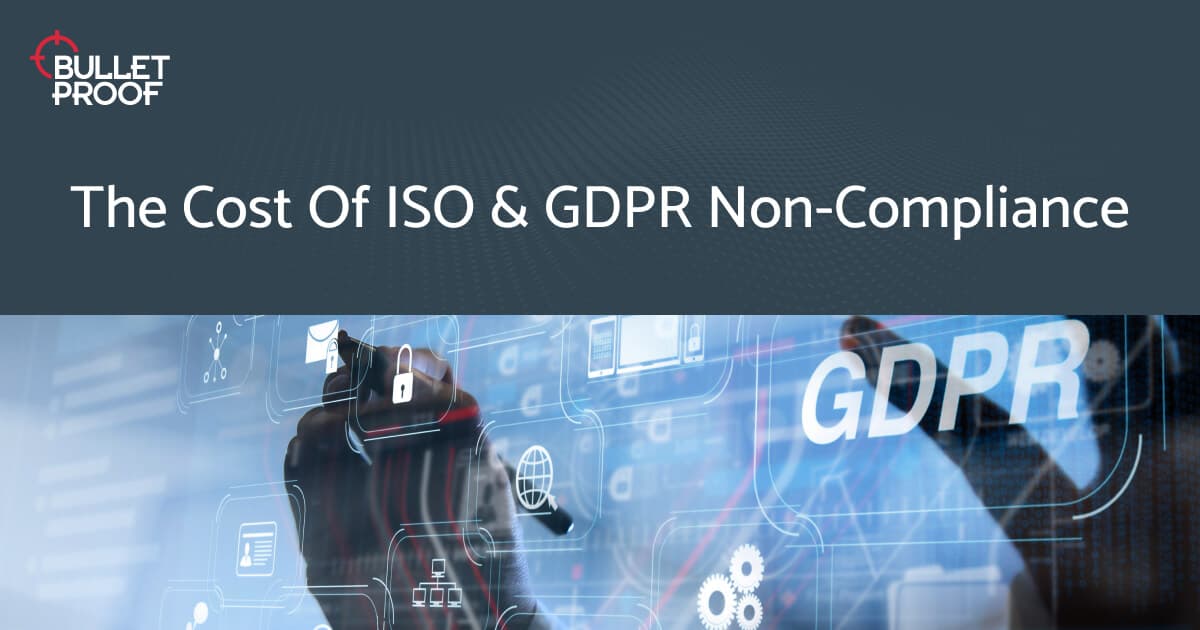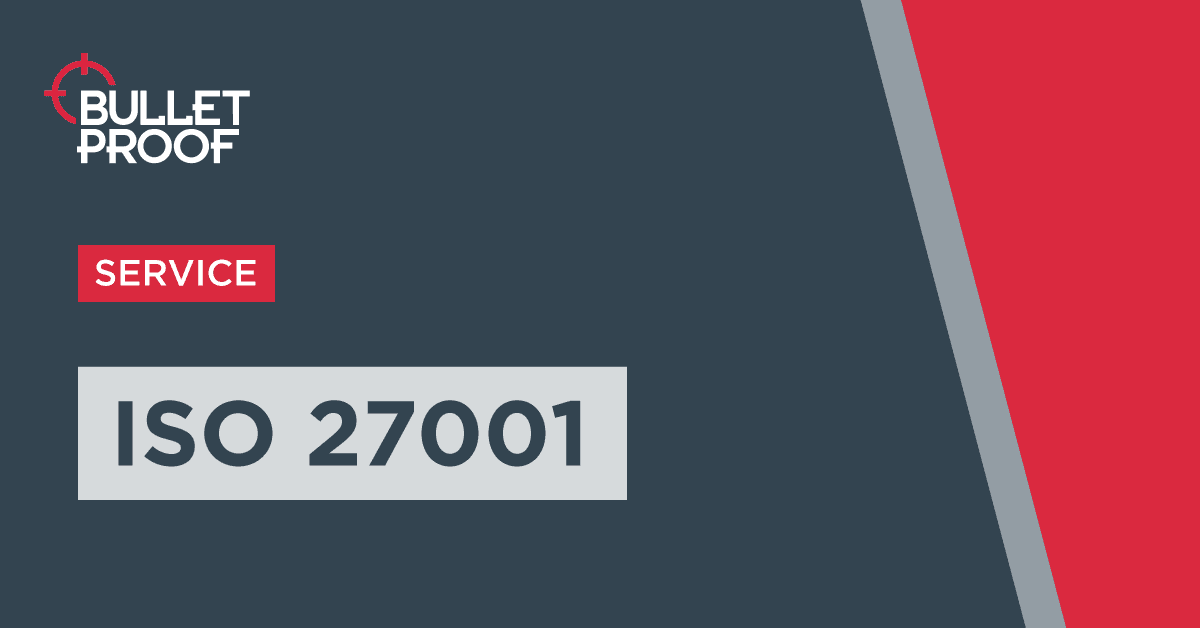Steps for Implementing ISO 27001
Our step-by-step guide to implementing ISO 27001 and getting your business certified with the leading accreditation in information security management.

Introduction
As the leading international standard on information security management, ISO 27001 is an important certification for businesses and is increasingly being demanded by customers as part of their supply chain management. With its standardised processes and reputational status, ISO 27001 shows interested third parties and prospective clients that you take the confidentiality, integrity and availability of their data seriously.
ISO 27001 is more than just an accreditation. It’s a way for you to transform your business practices by implementing an effective and strategic information security management system (ISMS). A well-planned ISMS can help to improve the security of your business operations, manage risk, and bring existing policies and procedures in line with information security best practices.
We have put together the following guide to help your business build an effective ISMS, including key considerations and next steps after you’ve implemented an ISMS, as you work towards ISO 27001 certification.
Share this Article
Contents
Key considerations prior to implementation
Cost analysis
One of the biggest considerations for implementing an ISMS is time and money. For example, scheduling meetings with key stakeholders, providing resources to implement and manage an ISMS, facilitating cross-department collaboration, and accounting for system and process reviews, will all place considerable demand on your time and budget. You will also need to account for external consultation and certification fees. So, having a breakdown of costs is essential for ensuring that you can carry out the project in full and secure internal funding.
Key stakeholder buy-in
Implementing ISO 27001 requires considerable commitment from your existing teams so it’s not a decision many businesses can take lightly. That’s why it’s important to secure buy-in from both senior management and key stakeholders early on. This will allow you to communicate why ISO 27001 is a worthwhile investment for your organisation. You will also need to set expectations and agree on the scope of the work to be carried out with senior management.
Project team
With your budget in place and your implementation plans signed off, it’s time to pull together your project team. When allocating responsibility, you’ll need to find staff with expertise in information security. This should include both physical and cyber security, and ideally, they should also have prior experience with auditing and ISMS implementation.
If these skills don’t exist within your workforce, consider hiring external experts who are qualified ISO 27001 lead implementers and auditors. Their experience of implementing and auditing an ISMS can bring valuable insight and provide methods to ensure you implement an ISMS in the most effective and time efficient manner.
Implement the ISMS
Once you have secured support from senior management and allocated resources to your team, use the following steps to guide your ISO 27001 implementation:
Leadership
Leadership has a critical role to play in the implementation of ISO 27001. If senior management are not on board, it’ll be incredibly difficult to implement an effective and functioning ISMS that will become part of business-as-usual activities. Leadership will have a key role in:
Defining security objectives
Establishing roles and responsibilities
Communicating to the organisation about the importance of information security and the need to adhere to policies and procedures that relate to it
Defining the risk acceptance criteria, to understand what level of risk the business is willing to accept
Ensuring appropriate resources are provided
Developing and disseminating a high-level information security policy
Identifying the context of the organisation
Here, the company should be identifying internal and external factors that may impact on its ability to achieve the intended outcomes of its Information Security Management System. By understanding the organisation and its context, you should be able to define the purpose of your ISMS.
Definition and scope of the ISMS
The scope should be well defined and manageable according to the resources available. It’s important to remember that the scope doesn’t necessarily have to cover the entire organisation. The scope of your ISMS should consider:
Assessing the scale of the organisation in terms of the number of locations, business processes, number of employees, products and services offered
Third party relationships with suppliers, for example, outsourced software development and third-party contractors
Dependencies on other organisations to deliver the products and services
Legal, regulatory and legislative requirements that may apply to the organisation or the products and services it offers
Security risk assessment & risk treatment
A crucial part of ISO 27001 implementation is your risk assessments and Risk Management Framework (RMF). They play a key role in helping to identify where additional controls are needed. Establishing an RMF allows a business to identify, understand and manage risks in a structured and consistent manner, and align the actions needed with your business’s objectives.
The risk assessment can be carried out using many different methods as ISO 27001 does not define a specific methodology. However, the key is to identify risks that can affect the confidentiality, integrity and availability of information assets. The risk assessment will enable your business to identify those risks that need to be addressed. From this, a risk treatment plan can be developed to define what needs to be done to address the risks. For example, apply new controls, decide to accept the risk or terminate the activity that is causing the risk, along with timescales.
Once the risk assessment and treatment plans are developed, a Statement of Applicability (SoA) can be created. A SoA clearly outlines the controls the organisation has and isn’t applying.
Implement controls
Once the controls that are needed have been identified, it’s time to implement them. This can require several different activities and will need input from a wide variety of people across different parts of the organisation. It’s important to remember that controls can be:
Technical – for example, installing an anti-virus solution
People-based – training your workforce on common cyber security threats to ensure you reduce the risk of cyber attacks
Process-based – for example, a strategic onboarding process that ensures you carry out security checks and define access levels for new employees
Certain policies and procedures will need to be documented as this is a mandatory requirement of ISO 27001. For example, the information security policy is a mandatory document, but it’s important to remember that not everything needs to be documented and organisations should always take care to ensure their documentation is manageable.
Monitor and evaluate
Monitoring and evaluating your ISMS is critical to ensure it is working correctly and continuous improvement is taking place. During implementation, this activity will involve conducting an internal audit which involves testing and evaluating the controls the organisation has implemented and identifying any areas where there are non-conformities.
Corrective actions can then be identified and implemented. Additionally, the standard requires, as part of monitoring activities, that your management team review the ISMS at periodic intervals. This is known as a management review and will cover areas such as:
Any changes to the internal or external environment that may impact information security
Results of audits
Reviewing information security objectives
Results of risk assessments
Opportunities for improvement
Non-conformities and corrective actions
Monitoring and measuring results
ISO 27001 Certification
The last step in the process is to achieve certification by undergoing a two-step auditing process conducted by a certification body. You will need to be able to provide the auditor with details of your ISMS and prove to them that it is a working system by demonstrating what you are doing. Many people get nervous about these audits, but if you’ve implemented your ISMS well, and can evidence that you are doing what you say you are doing, your road to certification will be a lot smoother.
Now what?
You may now heave a sigh of relief having achieved certification BUT it’s important to remember that your work is not complete. An ISMS is a continuously evolving system, and your organisation must ensure that it is running as part of your business-as-usual activities. That means there will be an ongoing set of activities to carry out to maintain your ISMS and ensure that there are no problems when it comes to the annual audits. This is often the most difficult part for organisations as the focus moves away from the ISMS and resources get re-allocated. It is critical at this stage that there is a clear plan of activities to maintain the ISMS and adequate resources are in place to deliver this.
How Bulletproof fits in
At Bulletproof, we can support your business through the entire process of implementation and beyond. Here’s how we can help:
At the start of your journey, we offer a gap analysis that can help identify what you already have in place prior to undertaking your implementation
We can provide consultative support throughout the actual implementation to ensure you’re ready for certification
Once you’re certified, we offer internal auditing services to help you conduct your annual internal audit
If you need more help to ensure you continue to manage your ISMS correctly on a day-to-day basis, we offer a vCISO service – a managed service where an experienced information security consultant will oversee all the key activities required to keep your ISMS in order
Book your 1-hour free consultation with us today to speak with an ISO certified expert who can provide you with guidance on the next steps.

Let us help you implement ISO 27001
At Bulletproof, we have the expertise your organisation needs to successfully implement ISO 27001. We may need to start with a Gap Analysis to identify which areas of your information security need to be improved and create a tailored implementation plan to deliver the most cost-effective compliance possible.
Learn moreRelated resources
Get a quote today
If you are interested in our services, get a free, no obligation quote today by filling out the form below.













